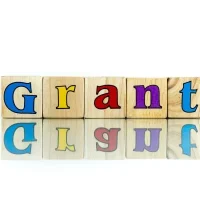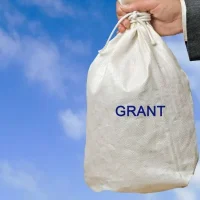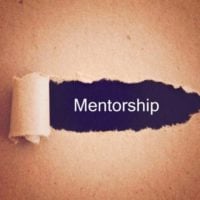As we step into 2025, the landscape of grants has evolved significantly, reflecting the changing priorities and challenges of our society. Grants have become a vital source of funding for various sectors, including small businesses, nonprofit organizations, education, research, environmental conservation, health, and the arts. The increasing complexity of societal issues has led to a more nuanced approach to grant-making, with funders seeking innovative solutions and measurable impacts.
This year, grant seekers must navigate a competitive environment where clarity of purpose, alignment with funder priorities, and demonstrable outcomes are paramount. In this dynamic landscape, understanding the types of grants available and the specific requirements for each can empower organizations and individuals to secure the funding they need. Whether you are a small business owner looking to expand your operations, a nonprofit striving to make a difference in your community, or a student seeking financial assistance for your education, there are numerous opportunities available.
This article will explore various categories of grants in 2025, providing actionable tips and real-world examples to help you successfully navigate the grant application process.
Government Grants for Small Businesses
Increased Accessibility and Support
Government grants for small businesses have become increasingly accessible in 2025, as local, state, and federal agencies recognize the critical role that small enterprises play in economic growth and job creation. These grants are designed to support innovation, expansion, and sustainability within the small business sector. For instance, the Small Business Administration (SBA) continues to offer various grant programs aimed at fostering entrepreneurship among underrepresented groups, including women and minorities.
Targeted Initiatives and Funding Opportunities
In addition to traditional funding sources, many government agencies have launched initiatives that focus on specific industries such as technology, renewable energy, and healthcare. To successfully apply for government grants, small business owners should first conduct thorough research to identify relevant opportunities. Websites like Grants.gov provide a comprehensive database of federal grant programs, while local government websites often list state-specific funding options.
Crafting a Winning Proposal
Once potential grants are identified, it is crucial to carefully review the eligibility criteria and application requirements. Crafting a compelling proposal that clearly outlines your business goals, the intended use of funds, and the anticipated impact on your community can significantly enhance your chances of securing funding. Real-world examples abound; for instance, a small tech startup in California received a government grant to develop an innovative software solution that improved efficiency in local businesses, ultimately leading to job creation and economic growth in the region.
Grants for Nonprofit Organizations
Nonprofit organizations play an essential role in addressing social issues and improving community well-being. In 2025, grants for nonprofits have become more specialized, with funders increasingly interested in supporting initiatives that demonstrate measurable outcomes and long-term sustainability. Foundations and government agencies alike are prioritizing projects that align with their missions and address pressing societal challenges such as poverty alleviation, education reform, and public health.
To secure funding, nonprofits must articulate a clear vision and demonstrate how their programs align with funder priorities. Building strong relationships with potential funders is also crucial; networking at industry events or engaging with them through social media can help establish rapport. Additionally, nonprofits should focus on data-driven storytelling—using statistics and personal narratives to illustrate the impact of their work.
For example, a nonprofit focused on youth mentorship might share success stories of participants who have gone on to achieve academic success or secure employment as a result of their programs. By showcasing tangible results and aligning their mission with funder interests, nonprofits can enhance their chances of receiving grants.
Educational Grants for Students
In 2025, educational grants for students remain a vital resource for those seeking to further their education without incurring significant debt. With rising tuition costs and an increasingly competitive job market, students are turning to grants as a means of financing their education. Various types of educational grants are available, including federal Pell Grants, state-specific scholarships, and private foundation awards.
These grants often target specific demographics or fields of study, making it essential for students to research their options thoroughly. To maximize their chances of receiving educational grants, students should begin by completing the Free Application for Federal Student Aid (FAFSA), which determines eligibility for federal financial aid programs. Additionally, students should explore local scholarship opportunities offered by community organizations or businesses.
Crafting a strong personal statement that highlights academic achievements, extracurricular involvement, and future goals can set applicants apart from the competition. For instance, a student pursuing a degree in environmental science might emphasize their commitment to sustainability through volunteer work or internships in related fields. By presenting a compelling narrative alongside academic credentials, students can increase their likelihood of securing educational grants.
Research and Development Grants
Research and development (R&D) grants are crucial for fostering innovation across various sectors in 2025. These grants support projects that aim to develop new technologies, products, or processes that can lead to significant advancements in fields such as healthcare, engineering, and information technology. Government agencies like the National Institutes of Health (NIH) and the National Science Foundation (NSF) continue to provide substantial funding for R&D initiatives that promise to address critical challenges facing society.
To successfully apply for R&D grants, researchers must clearly define their project objectives and demonstrate how their work aligns with the funder’s mission. A well-structured proposal should include a detailed research plan outlining methodologies, timelines, and expected outcomes. Collaborating with industry partners or academic institutions can also strengthen proposals by showcasing a broader impact and potential for commercialization.
For example, a university-led research team developing a new medical device might partner with a healthcare provider to test its efficacy in real-world settings. By highlighting collaborative efforts and potential applications of their research, applicants can enhance their chances of securing R&D funding.
Grants for Environmental Conservation
Eligible Projects and Initiatives
Organizations focused on environmental conservation can apply for grants to support a wide range of projects, including wildlife preservation, habitat restoration, and renewable energy initiatives. These projects should prioritize community-based conservation efforts and aim to promote sustainability, protect natural resources, and combat climate change.
Securing Environmental Conservation Grants
To successfully secure environmental conservation grants, organizations must demonstrate a clear understanding of the ecological challenges they aim to address and present actionable solutions. Proposals should include specific goals, measurable outcomes, and plans for community engagement. For instance, an organization seeking funding for a reforestation project might outline how many trees they plan to plant, the species selected for biodiversity benefits, and how they will involve local volunteers in the effort.
Key Factors for Grant Success
By providing concrete details about their initiatives and emphasizing community involvement and environmental impact, organizations can significantly improve their chances of receiving funding. This includes outlining specific goals, measurable outcomes, and plans for community engagement, as well as demonstrating a clear understanding of the ecological challenges they aim to address.
Increasing Funding Opportunities
As the importance of environmental conservation continues to grow, the availability of grants and funding opportunities is also increasing. Organizations should take advantage of these opportunities by submitting well-researched and well-planned proposals that demonstrate their commitment to environmental conservation and community involvement.
Health and Wellness Grants
In 2025, health and wellness grants are more critical than ever as communities grapple with ongoing public health challenges exacerbated by recent global events. These grants support initiatives aimed at improving health outcomes through preventive care programs, mental health services, nutrition education, and access to healthcare resources. Government agencies like the Centers for Disease Control and Prevention (CDC) and various private foundations are actively funding projects that address health disparities and promote overall well-being.
To effectively apply for health and wellness grants, organizations must present data-driven proposals that highlight the specific health issues they aim to tackle within their communities. Collaborating with local health departments or medical professionals can lend credibility to proposals by demonstrating an understanding of community needs. For example, a nonprofit focused on mental health might partner with local therapists to develop a program that provides free counseling services to underserved populations.
By showcasing partnerships and emphasizing measurable health outcomes—such as reduced rates of anxiety or depression—organizations can enhance their chances of securing health-related funding.
Arts and Culture Grants
The arts play an essential role in enriching communities and fostering cultural understanding; thus, arts and culture grants have become increasingly important in 2025. These grants support projects that promote artistic expression across various mediums—visual arts, performing arts, literature—and often prioritize initiatives that engage diverse communities or address social issues through art. Funding sources include government agencies like the National Endowment for the Arts (NEA) as well as private foundations dedicated to supporting cultural initiatives.
To successfully apply for arts and culture grants, organizations must articulate a clear vision for their projects while demonstrating how they will engage audiences and foster community involvement. Proposals should include detailed plans for programming, outreach efforts, and anticipated impacts on participants. For instance, an arts organization seeking funding for a community mural project might outline how they will involve local artists and residents in the design process while addressing themes relevant to the community’s history or identity.
By emphasizing collaboration and community engagement alongside artistic merit, applicants can significantly improve their chances of receiving arts-related funding. In conclusion, navigating the grant landscape in 2025 requires diligence, creativity, and strategic planning across various sectors—from small businesses to nonprofits to educational institutions. By understanding the specific types of grants available and tailoring proposals to meet funder priorities while showcasing measurable impacts, applicants can enhance their chances of securing vital funding that supports their missions and drives positive change within their communities.








































